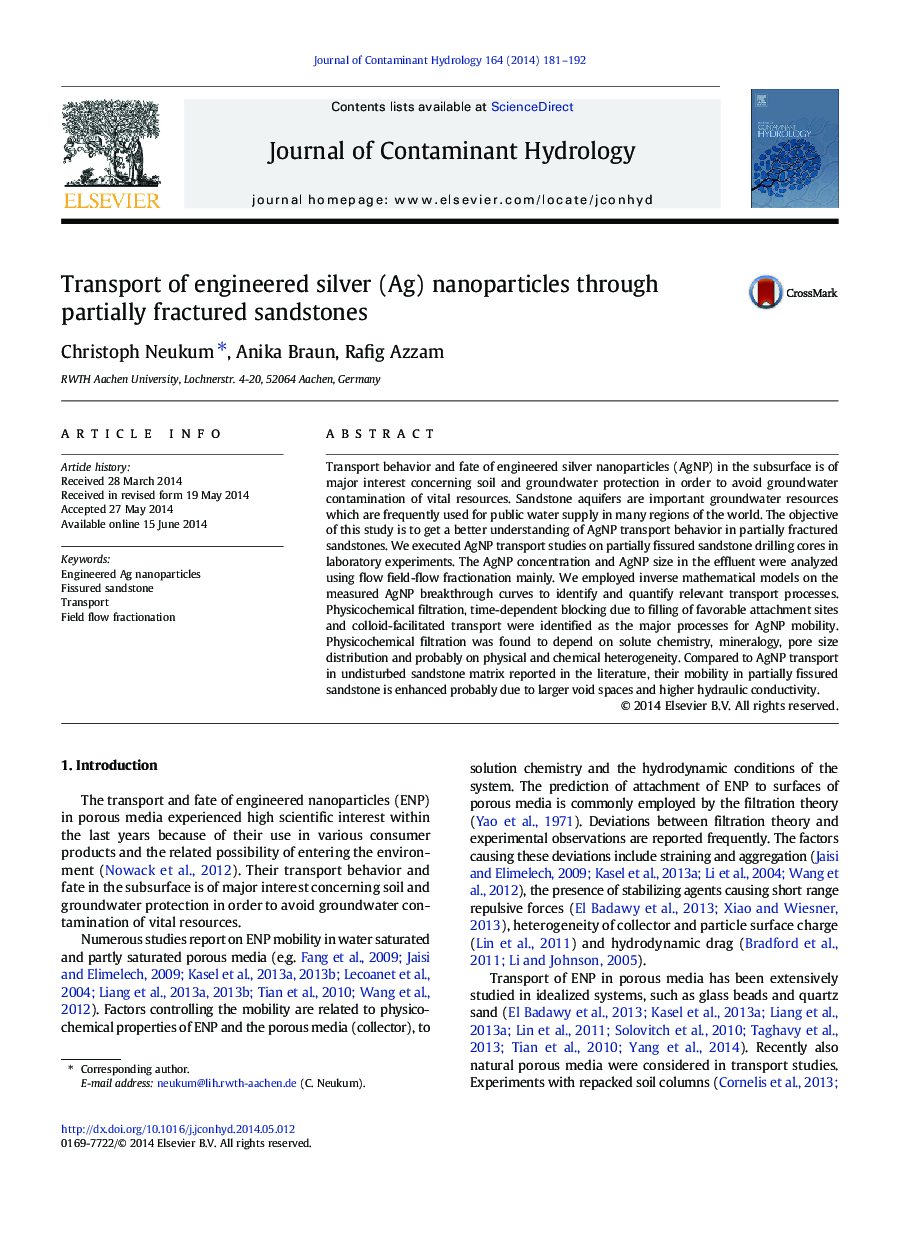| Article ID | Journal | Published Year | Pages | File Type |
|---|---|---|---|---|
| 6386537 | Journal of Contaminant Hydrology | 2014 | 12 Pages |
â¢Transport with stabilized silver nanoparticles in partially fissured sandstonesâ¢Different types of sandstone and solute chemistries are included in this study.â¢Two and one site kinetic transport models are fitted to experimental results.â¢Physicochemical filtration is the major transport process.â¢Colloid-facilitated transport may improve silver nanoparticle mobility.
Transport behavior and fate of engineered silver nanoparticles (AgNP) in the subsurface is of major interest concerning soil and groundwater protection in order to avoid groundwater contamination of vital resources. Sandstone aquifers are important groundwater resources which are frequently used for public water supply in many regions of the world. The objective of this study is to get a better understanding of AgNP transport behavior in partially fractured sandstones. We executed AgNP transport studies on partially fissured sandstone drilling cores in laboratory experiments. The AgNP concentration and AgNP size in the effluent were analyzed using flow field-flow fractionation mainly. We employed inverse mathematical models on the measured AgNP breakthrough curves to identify and quantify relevant transport processes. Physicochemical filtration, time-dependent blocking due to filling of favorable attachment sites and colloid-facilitated transport were identified as the major processes for AgNP mobility. Physicochemical filtration was found to depend on solute chemistry, mineralogy, pore size distribution and probably on physical and chemical heterogeneity. Compared to AgNP transport in undisturbed sandstone matrix reported in the literature, their mobility in partially fissured sandstone is enhanced probably due to larger void spaces and higher hydraulic conductivity.
